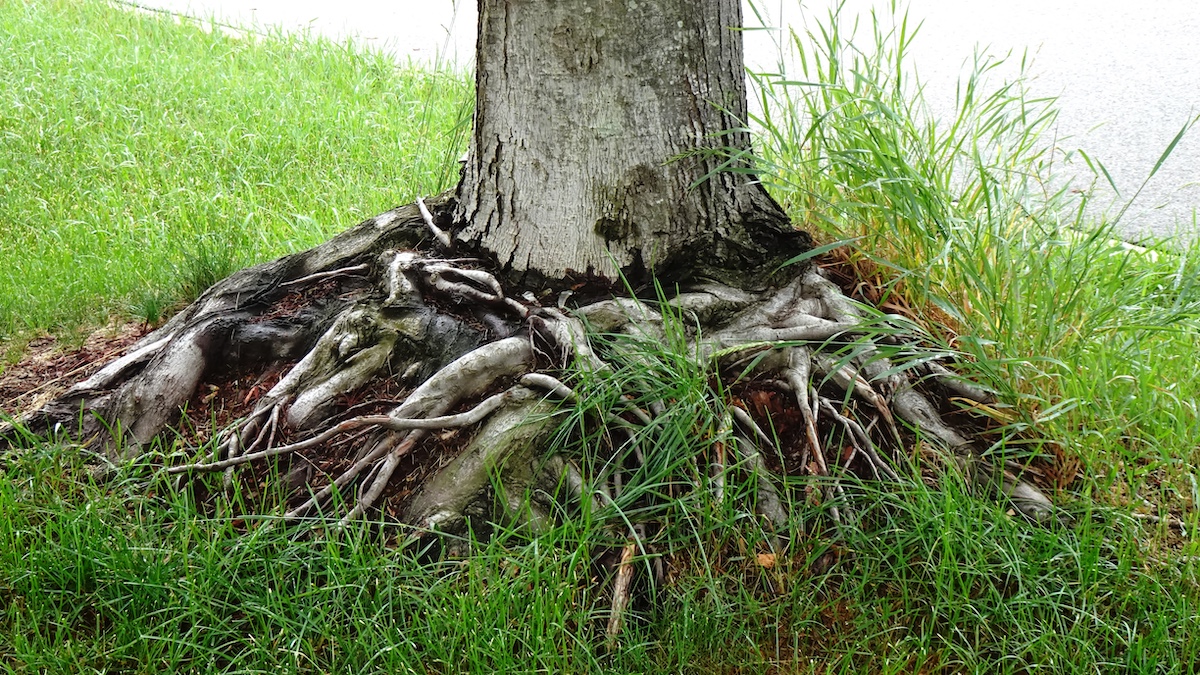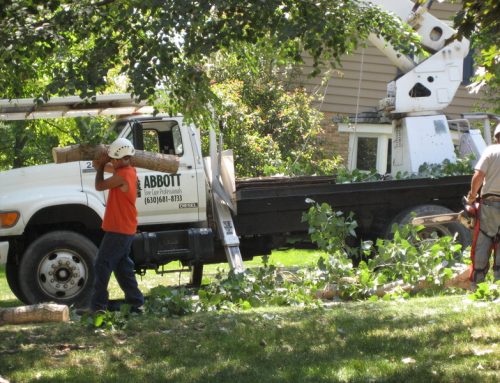When it comes to keeping trees healthy, the root system is just as important as what you see above ground. Unfortunately, not all root systems develop the way they should. Girdling roots is one of the most common hidden problems we see in trees.
Girdling roots occur when a tree’s roots grow in a circular or tangled pattern around the base of the trunk instead of spreading outward into the soil. Over time, these roots can begin to “strangle” the tree by cutting off the flow of water and nutrients. Left untreated, these roots can weaken and kill even the healthiest-looking tree.

How do girdling roots happen?
There are a few reasons why girdling develops. One common cause is improper planting. If a tree is planted too deeply or the roots are never loosened from a container or burlap wrap, they can start growing in circles rather than outward. Compacted soil, limited growing space, or damage to roots during planting can also increase the chances of these roots forming.
Many times, the issue isn’t noticeable right away. A young tree may look fine for years before the girdling roots start causing visible damage. That’s why regular inspections are so important.
Signs of Girdling Roots
Spotting girdling roots isn’t always easy since they form below the soil surface. However, there are some signs you can look for around your yard:
• A tree with a thin or declining canopy compared to nearby trees
• Early fall color or leaf drop
• Dieback in branches at the top of the tree
• Trunk flare (where the base of the trunk meets the soil) that looks flat or missing on one side
• Roots visibly circling the base of the tree above the ground
If you notice one or more of these symptoms, having a certified arborist inspect the tree is a good idea.

Why These Roots Are a Problem
At first, girdling roots may not seem like a big deal. As the tree grows, these roots press against the trunk, disrupting the tree’s ability to transport water and nutrients. This can lead to poor growth, vulnerability to pests and disease, and structural instability.
In severe cases, girdling roots can cause the tree to fail, turning a seemingly healthy tree into a potential hazard in your yard.
Treatment and Prevention
The good news is that girdling roots can often be corrected, especially when caught early. Arborists typically use root collar excavation, which involves carefully exposing the root flare at the base of the trunk to identify and remove problematic roots.
For prevention, proper planting is key. Trees should always be planted at the correct depth, with roots loosened and spread outward into the soil. Regular monitoring by a professional can also catch early warning signs before damage becomes irreversible.
Girdling roots are a hidden issue that many homeowners don’t realize until it’s too late. Our certified arborists, with their extensive knowledge and experience, are trained to diagnose the problem, recommend the best course of action, and provide treatments that support long-term tree health. They are your best resource in dealing with girdling roots.
If you suspect girdling roots in your yard or want peace of mind, reach out to Abbott Tree Care. We can ensure your trees continue to grow strong by inspecting young plants to prevent girdling roots or helping restore established trees. Remember, early detection and professional intervention can prevent irreversible damage. Our team is here to provide expert inspections, treatments, and long-term care to keep your trees healthy and safe.





